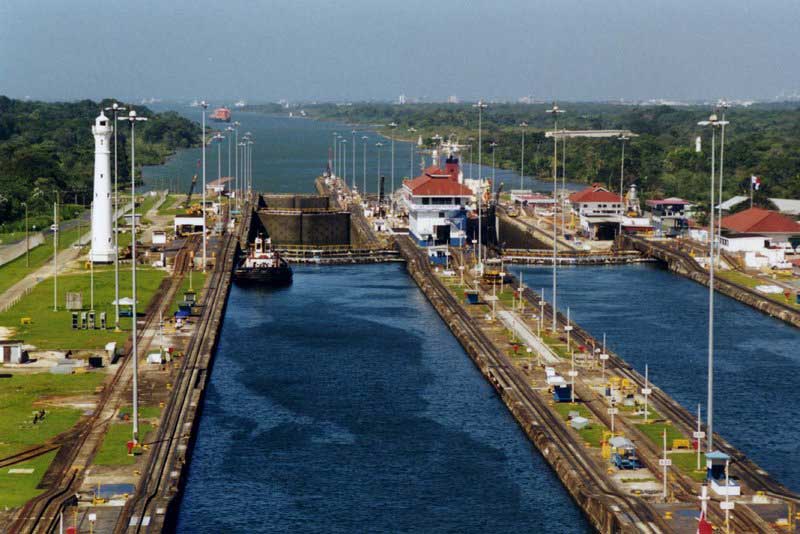Panama Canal (Take One): “You Want US to be line handlers?”
Rob and I are going to serve as line handlers on a 38-foot monohull sailboat heading through the Panama Canal tomorrow. Those of you familiar with our intended itinerary are probably confused, since you know we’re crewing on Llyr through the Canal en route to the South Pacific. Here’s the deal: we get to cross twice!
A very nice British couple approached Llyr yesterday while we were scraping blisters from the keel and applying sealant (glamorous work, for sure). They desperately needed 2 more line handlers in order to meet the requirements for a Canal crossing, and offered us 3 meals and a paid cab ride from Panama City back to the marina in return for our presence on their pretty sailboat, Mauna, for 24 hours. “Hell, yes,” I replied. “I can’t wait to see this Canal in action.”

About 130 boats are camped out here at Shelter Bay Marina, and most are waiting in line for their turn to cross the man-made engineering wonder that connects the Caribbean Sea to the Pacific Ocean. A ship has to be lifted 85 feet, cross a 31-mile freshwater lake, drop 85 feet and cross another mile-long lake to reach the Pacific. It takes two dams, 5 locks, and 53 million gallons of fresh water to get a boat from one side to the other.
It ain’t no cakewalk to go through the Canal, either: small vessels (i.e. anything that’s not a freighter or cruise ship) need to hire an agent to make sure they get a slot in for the crossing. Yachts are also required a have a “guide” who helps the skipper pilot through the locks as well as 4 “line handlers:” 2 on either side of the bow and stern. Note for non-nautical reader: all ropes are called “lines” on a boat (unless it’s called a “sheet,” of course) mostly to make non-nautical people feel dumb when they call it a rope.

In reality, the majority of privately-owned pleasure yachts don’t have to do too much line work, since they are often rafted-up next to the giant mega-sized boats. That means big boats typically tie onto the sides of the locks as they fill or empty, and the smaller sailboats fill in around the cargo ships like puzzle pieces (or those Styrofoam peanuts in mail packages). Ideally, the small boats are then buffered by tying into the non-wall side of the big ship, and avoid the constant tying/untying of lines. In reality, I have no idea how any of this really works, and I’m eager to learn tomorrow.
We leave at 1pm tomorrow and will spend the night anchored in Lake Gatun. Around noon on Tuesday, we should be heading under the Bridge of the Americas and splashing into the Pacific. Rob and I will be back aboard Llyr in time for dinner. Hopefully, we’ll return with helpful hints for a second smooth Canal crossing, a few stories of crocodile sightings in the lake, and no tales of poorly-handled lines.


